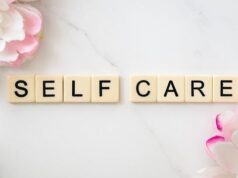Living with a parent who struggles with hoarding can be a complex and emotionally challenging experience. For many adult children, this situation is imbued with a mix of concern, frustration, and a deep-seated desire to help. Hoarding, recognized as an anxiety disorder, affects not only the individual but also their family members, leading to strained relationships, disrupted family dynamics, and a host of logistical challenges. Understanding the nuances of this disorder is crucial for those looking to support their loved ones while maintaining their own mental well-being. In this article, we will explore effective strategies for dealing with hoarder parents, offering insights into fostering open communication, setting boundaries, and facilitating professional help, all while navigating the delicate balance of empathy and self-care. Whether you’re seeking to understand the roots of your parent’s behaviour or looking for practical actions you can take, this guide aims to empower you with the tools necessary to foster a healthier home environment.
Understanding the Psychology Behind Hoarding Behavior
Understanding the underlying factors driving hoarding behaviour is crucial when addressing the challenges posed by hoarder parents. Hoarding is often linked to an intense emotional attachment to possessions, which may stem from feelings of anxiety or insecurity. This protective mechanism makes it difficult for individuals to let go of items, as they perceive them as essential to their identity or safety. Furthermore, hoarding can be exacerbated by issues such as low self-esteem and decision-making difficulties, often leading to a cycle where the accumulation of items compounds their distress.
Recognizing these psychological aspects can foster empathy and communication when intervening. Engaging hoarder parents in a non-judgmental dialog is essential. Instead of focusing solely on the clutter, it may be more effective to address the emotional needs and underlying fears that contribute to their behaviors. Techniques such as active listening and sharing feelings without blame can pave the way for constructive conversations. Providing support through gentle encouragement towards professional help, such as cognitive behavioral therapy, can also create a path toward healing and organize a living space that feels safe and manageable.
Recognizing the Signs of Hoarding in Parents
Identifying hoarding behaviors in parents can be a delicate task, yet recognizing the signs early can aid in addressing the issue compassionately. Common indicators include a conspicuous inability to discard items, regardless of their apparent value. If you notice items piling up to the extent that they obstruct living spaces or pathways, it’s a significant red flag. Other signs might involve excessive attachment to seemingly mundane objects, such as old newspapers or broken appliances, which they insist hold sentimental value. This emotional connection to clutter can often make it challenging for them to differentiate between what is genuinely useful and what is merely trash.
Additionally, consider the impact of hoarding on their daily lives and living conditions. Look for signs such as increased anxiety when discussing disposal of items or a pattern of acquiring more belongings than they can manage. Social withdrawal may also be evident; they might avoid inviting family or friends over due to the embarrassment of their cluttered environment. Recognizing these behaviors early allows for a more empathetic approach, focusing on understanding their perspective while gently encouraging them towards healthier habits and professional support.
Creating a Safe and Supportive Environment
Establishing a secure and compassionate space for a parent with hoarding tendencies begins with empathy and understanding. It is essential to approach the situation without judgment, acknowledging that hoarding is often tied to deeper emotional issues rather than mere clutter. Creating a decluttering plan that encourages participation rather than force can help foster a sense of autonomy. Consider incorporating the following strategies:
- Open Communication: Discuss feelings and concerns openly, emphasizing love and support.
- Set Small Goals: Break down the process of decluttering into manageable tasks to avoid overwhelming them.
- Safe Spaces: Designate specific areas in the home where clutter can be minimal, promoting a sense of calm.
In addition to setting up physical spaces, emotional support plays a crucial role in nurturing a positive environment. Encourage your parent to share their thoughts about their belongings and why they find it difficult to part with them. This can lead to productive conversations about the underlying fears associated with letting go. It’s also beneficial to seek external support, either through counseling or support groups, which can provide valuable insights and coping mechanisms. Integrating these elements can create an atmosphere of trust and safety, allowing for healthier habits to develop over time.
- Encourage Professional Help: Collaborate with mental health professionals who specialize in hoarding disorders.
- Celebrate Progress: Acknowledge even the smallest achievements to motivate and uplift.
- Maintain Patience: Understand that changes take time, and setbacks may occur.
Approaching the Conversation with Compassion
When initiating a conversation about hoarding with your parents, it’s essential to approach the topic with sensitivity and understanding. Begin by creating a safe space where they feel comfortable expressing their thoughts and feelings. Choose a calm environment and a suitable time for discussion, ensuring you have their full attention. Listen actively to their concerns and experiences, as this demonstrates that you respect their perspective. As you communicate, use non-judgmental language to convey your viewpoints, minimizing the risk of defensiveness. It may help to share your feelings using “I” statements, such as “I feel worried about your safety” rather than “You need to clean up.” This approach can foster a more open dialog and pave the way for constructive discussions.
Encouraging your parents to discuss their attachment to items can also be beneficial. You might consider asking them about specific objects and the memories or sentiments attached to them. This not only shows you care about their emotions but also allows them to reflect on their possessions. It’s important to maintain a supportive tone throughout the conversation. Suggest that you can work together—perhaps offering to help them sort through their belongings without pressure. Reinforce the idea that seeking help isn’t a sign of failure but a step towards a healthier and more manageable living space. Remember, patience and compassion are key; change takes time, and your understanding can significantly ease this process.
Setting Realistic Goals for Decluttering
When navigating the delicate situation of helping hoarder parents, it’s vital to establish goals that are both achievable and compassionate. Start by assessing the environment and identifying specific areas that need attention, such as a cluttered living room or an overflowing garage. Setting clear, realistic objectives can minimize overwhelm and foster a sense of accomplishment. Rather than attempting to tackle the entire house at once, focus on smaller tasks, such as:
- Clearing one shelf or drawer at a time
- Designating a box for items to keep, donate, or discard
- Setting a time limit on decluttering sessions to reduce fatigue
Additionally, involve your parents in the decision-making process to ensure they feel empowered and respected. Discuss what items hold sentimental value versus those that may be contributing to clutter. Implementing a system that encourages them to think critically about their belongings can lead to significant breakthroughs. By establishing incremental goals, such as:
- Emptying one room per month
- Regularly scheduled check-ins to celebrate progress
- Creating a plan for ongoing maintenance of spaces
These approaches can create a supportive atmosphere where decluttering feels less like a chore and more like a collaborative journey towards a more serene and organized living space.
Establishing Boundaries and Respectful Intervention
When dealing with a parent who has a hoarding disorder, establishing clear and respectful boundaries is crucial for both your well-being and theirs. Begin by openly discussing your concerns in a calm and compassionate manner. It’s essential to approach the conversation with empathy, acknowledging the emotional aspects of their attachment to possessions. Consider setting specific limits regarding shared spaces in the home, such as:
- Designating areas that are kept clutter-free for common use.
- Agreeing on storage solutions that allow for some organization while still respecting their belongings.
- Setting timeframes for sorting through items together without rushing the process.
Implementing boundaries should not feel like an imposition but rather a collaborative effort toward improvement. As you create these limits, maintain an open dialog about the importance of mental health and the potential risks associated with hoarding. Involve them in decisions regarding interventions, which can foster a sense of control and agency. Support from family can be instrumental, so consider outlining steps together, such as:
- Seeking professional guidance from therapists who specialize in hoarding interventions.
- Establishing regular check-ins to assess progress and feelings about the current living situation.
- Encouraging participation in support groups for both them and your family to gain insights and strategies.
Involving Professional Help: When and How
Understanding when to seek professional help for a hoarding situation is crucial. Signs that indicate professional intervention may be necessary include:
- Severe clutter that affects daily functioning and safety.
- Feelings of distress or anxiety related to belongings or the environment.
- Inability to make decisions about possessions.
- Isolation or withdrawal from social activities due to embarrassment or shame.
- Health concerns arising from unsanitary or hazardous living conditions.
If you observe any of these signs, it’s important to encourage your parent to seek help from a qualified mental health professional specializing in hoarding disorder.
Once the decision to engage professional assistance is made, it’s vital to approach the process thoughtfully. Key steps in involving professional help are:
- Research therapists or counseling services that focus on cognitive behavioral therapy (CBT), known to be effective in treating hoarding.
- Consider involving a professional organizer who has experience working with hoarders, especially for decluttering tasks.
- Establish a supportive environment that emphasizes understanding and patience, making the professional journey less daunting for your parent.
- Stay engaged throughout the treatment process, attending sessions when appropriate, to show solidarity and support.
This combined approach can significantly enhance the treatment experience and foster improvement in your parent’s living conditions.
Fostering Emotional Resilience in Yourself
Building emotional resilience in the face of challenging circumstances requires a proactive approach to self-care and a commitment to understanding your experiences. Begin by acknowledging your feelings about the situation. It’s essential to recognize that your emotions are valid, whether they manifest as frustration, sadness, or embarrassment. Consider creating a safe space for processing these feelings. Engaging in activities like journaling or mindfulness meditation can help clarify your emotions and offer insight into your family’s dynamics. Establishing boundaries is also crucial; take the time to specify what is acceptable for you regarding interaction with your hoarding parent. This can provide a sense of control amid the chaos.
Moreover, actively seek support from trusted individuals who can help you navigate your feelings and experiences. Connecting with others who understand the impact of growing up in a cluttered environment can foster a sense of community and lessen feelings of isolation. Participating in support groups or therapy can help you learn coping strategies and provide a platform to share your story. Incorporate self-compassion into your daily routine; remind yourself that you are not responsible for your parent’s choices. By focusing on nurturing your emotional well-being and fostering connections, you can build a foundation of resilience that empowers you to face the challenges ahead.
Exploring Alternative Living Solutions
As the situation with a hoarding parent evolves, becomes crucial. One option to consider is downsizing, which could involve helping them transition to a smaller living space that is easier to manage. This may involve assessing their belongings and determining what items have true value or meaning. Introducing professional organizers who specialize in hoarding can facilitate this process and promote a more manageable living environment. Additionally, community support services can provide vital resources, including finding suitable housing that balances independence and safety.
Another alternative is to encourage a shared living arrangement, where family members or caregivers can provide support while living together. This arrangement can foster an environment of accountability and encouragement, helping your parent to gradually let go of excess possessions in a gentle manner. Furthermore, exploring assisted living facilities that are familiar with hoarding issues can offer a structured environment equipped with the necessary support systems. These environments often provide therapeutic services and help seniors gain skills to manage their possessions effectively, leading to healthier living conditions.
Celebrating Small Victories During the Process
In the delicate journey of assisting a parent with hoarding tendencies, recognizing and celebrating small victories can serve as a powerful motivator. When progress is made, no matter how minor, it is essential to acknowledge these moments. Create a list of accomplishments that can include actions like sorting through a single drawer, throwing away a handful of items, or simply being able to discuss the clutter. Each small success should be celebrated as a step forward, reinforcing positive behaviour and encouraging continued effort. A small reward or verbal recognition can create a ripple effect of motivation, making the process feel less daunting.
Moreover, it’s important to maintain a positive atmosphere during these moments of progress. Share uplifting stories about how decluttering has improved others’ lives or how even small changes can lead to significant improvements in mental well-being. By fostering a sense of achievement, the task of decluttering can shift from a burden to an inspiring journey. Engaging in discussions about what has been accomplished, reminding them of the benefits of a tidier space, and allowing them to express their feelings about these changes can nurture a sense of pride and encourage them to keep moving forward.
Encouraging Gradual Change and Maintenance Strategies
Facilitating gradual change in the living environment of hoarder parents requires a patient and empathetic approach. Start by identifying small, manageable areas within the home for decluttering. Breaking the task into simpler steps can make the process less overwhelming. Consider establishing a routine where you and your parents can collaboratively review one room or space at a time. This not only fosters a sense of teamwork but also encourages them to take ownership of their belongings. Key strategies may include:
- Setting Clear Goals: Define specific, attainable objectives for each session.
- Creating a Sorting System: Use categories such as ‘keep’, ‘donate’, and ‘discard’ to simplify decisions.
- Celebrating Small Wins: Acknowledge progress to motivate further efforts and build confidence.
To maintain the progress achieved, it’s essential to implement ongoing strategies that reinforce the changes made. Regular check-ins can help sustain the momentum and encourage your parents to adopt new habits. Discussing feelings about possessions and addressing any underlying fears or anxieties can greatly aid in this process. Consider incorporating these practices into your routine:
- Establishing Regular Decluttering Sessions: Schedule consistent times to reassess and organize belongings.
- Fostering Open Communication: Encourage dialog about their attachment to items and the emotional weight they carry.
- Promoting Accountability: Involve them in decision-making to reinforce their commitment to maintaining a clutter-free space.
Insights and Conclusions
Navigating the complexities of living with hoarder parents can be an emotionally charged journey, marked by both challenges and moments of clarity. As you move forward, remember that understanding and empathy can serve as powerful tools in this intricate relationship. It’s essential to recognize that hoarding is not simply a matter of clutter; it is often rooted in deeper emotional struggles. By fostering open communication and establishing healthy boundaries, you can create a space for healing and growth. Acknowledging your feelings while approaching the situation with compassion can help bridge the gap between you and your parents, paving the way for a healthier family dynamic. The road may be long, but with patience and support, both you and your hoarder parents can find a path toward understanding and recovery.




